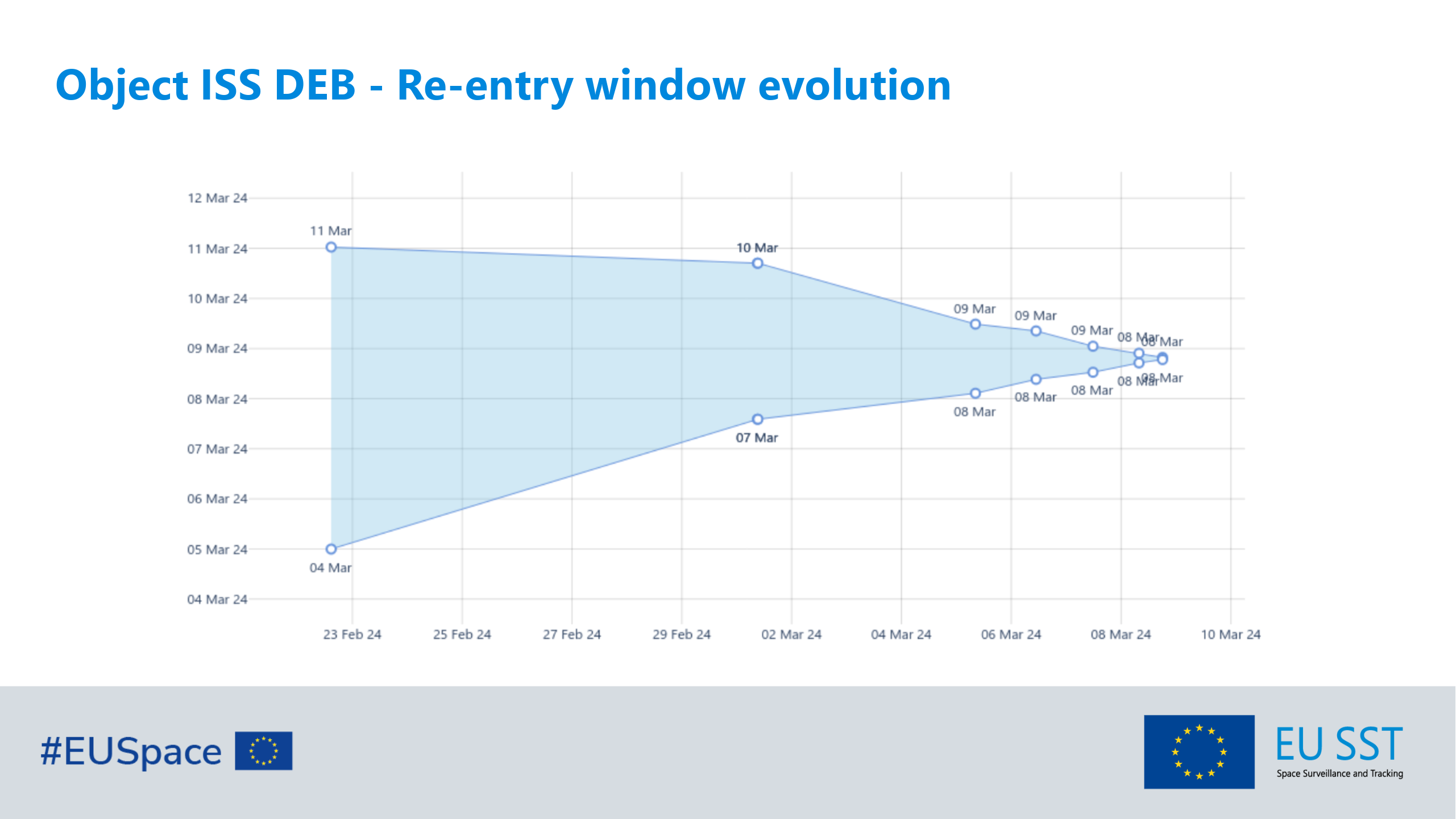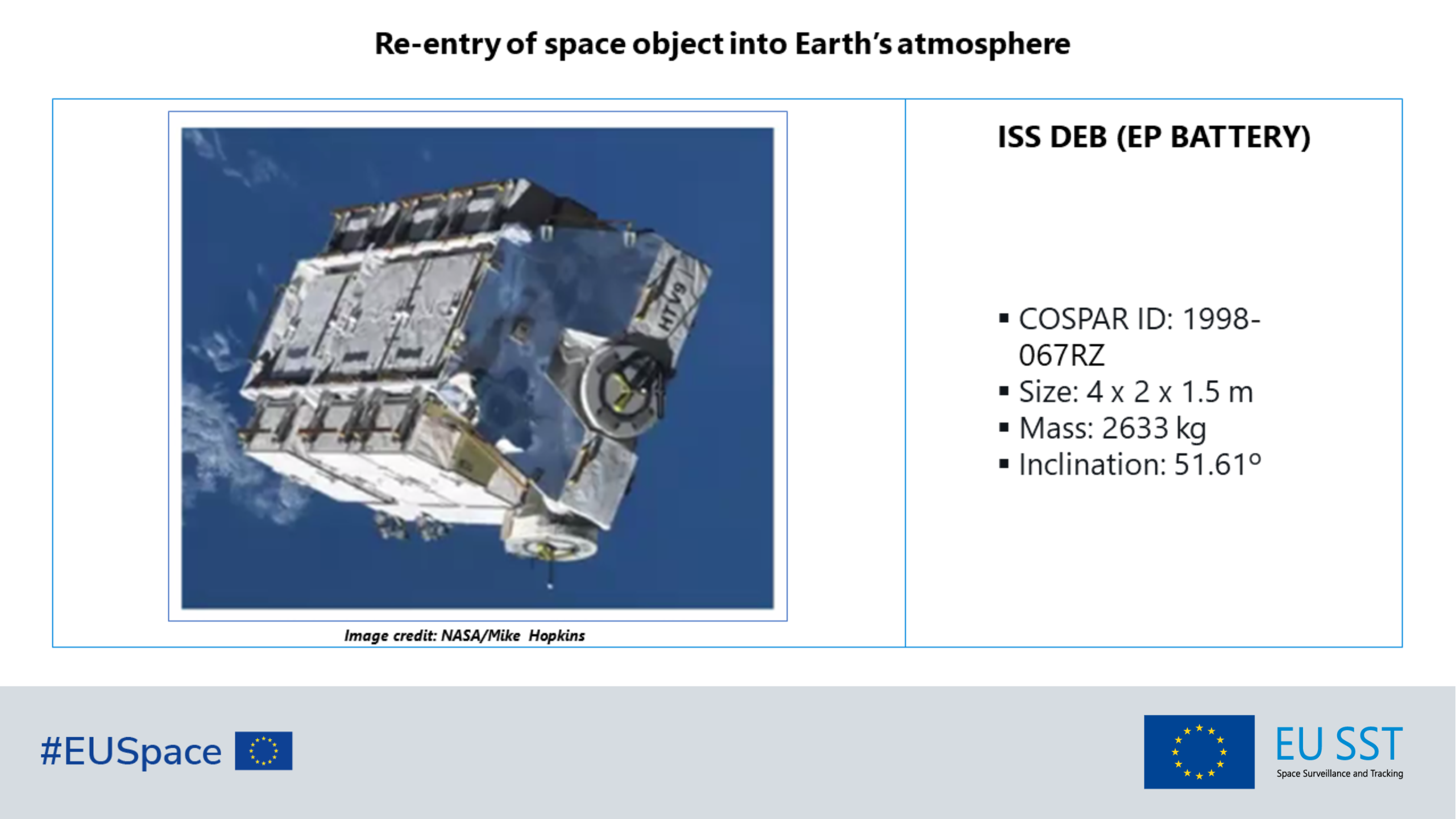
The EU Space Surveillance and Tracking (EU SST) Operations Centres has monitored the re-entry into Earth’s atmosphere of space object ISS DEB (EP BATTERY) 1998-067RZ, a battery pallet ejected from the International Space Station (ISS) in 2021. The EU SST network of sensors observed the object closely, and narrowed down its re-entry window to 8 March in the evening.
Latest update: 2024-03-08 22:00 UTC+1
Based on EU SST analysis, no-shows during passes and external information, EU SST confirms that object ISS DEB (EP BATTERY) decayed within the last estimated re-entry window (2024-03-08 19:13 UTC ±30 minutes).
Due to its inclination (51.61 degrees), the object could re-enter within the latitude band ±51.61 deg. Most part of the Earth surface is covered by ocean or uninhabited areas, so the statistical probability of an impact on the ground in populated areas was low. These predictions however came with uncertainties as the object was uncontrolled.
The below figure shows the ground track for the last estimated re-entry window 2024-03-08 19:13 UTC ±30 minutes.

Map of the whole ground track.
Green lines: ground track during the re-entry window. Red lines: part of ground track over EU Member States. Marker: centre of the predicted re-entry window.
Note: the possible re-entry locations lie anywhere along the green lines. The re-entry point was considered to be at an altitude of 80 km.
Object ISS DEB (EP BATTERY), which had a mass of 2633 kilograms and a size of 4 x 2 x 1.5 metres, contained a total of 342 battery cells made of nickel-chrome alloy steel with nickel oxide cathodes. These materials most likely did not burn completely when re-entering the Earth’s atmosphere and the object’s fragments could disperse, which made it deserve careful monitoring. EU SST contributing sensors observed the object and Operations Centres performed analyses to produce the best possible estimation for the expected re-entry location and time.

